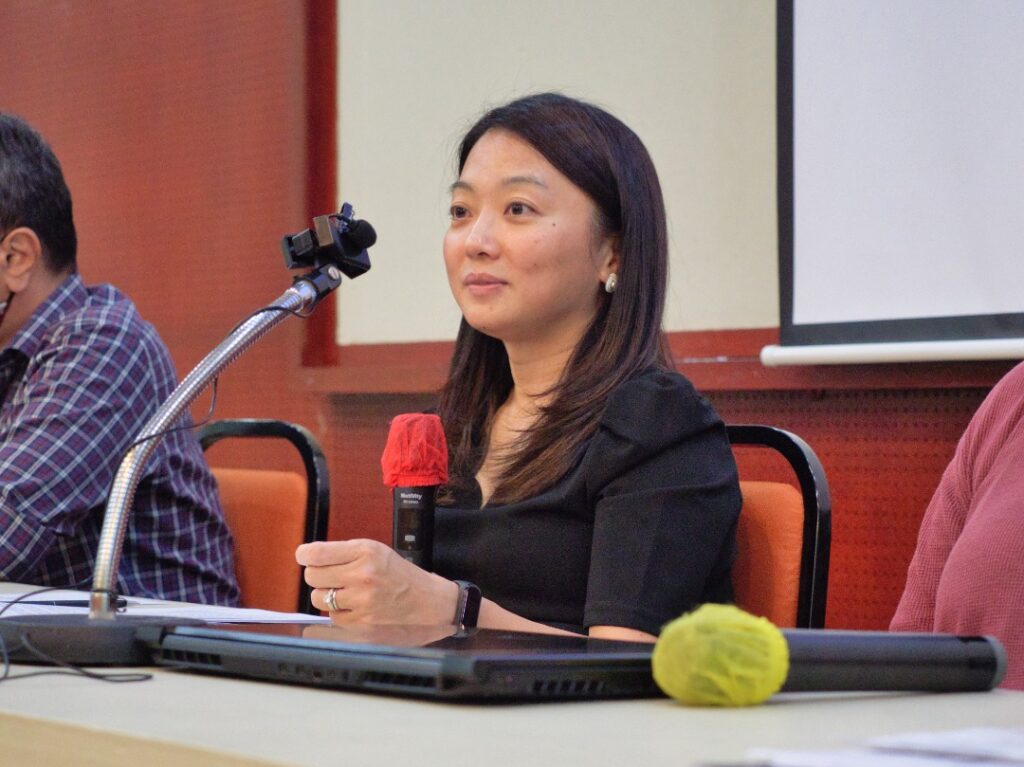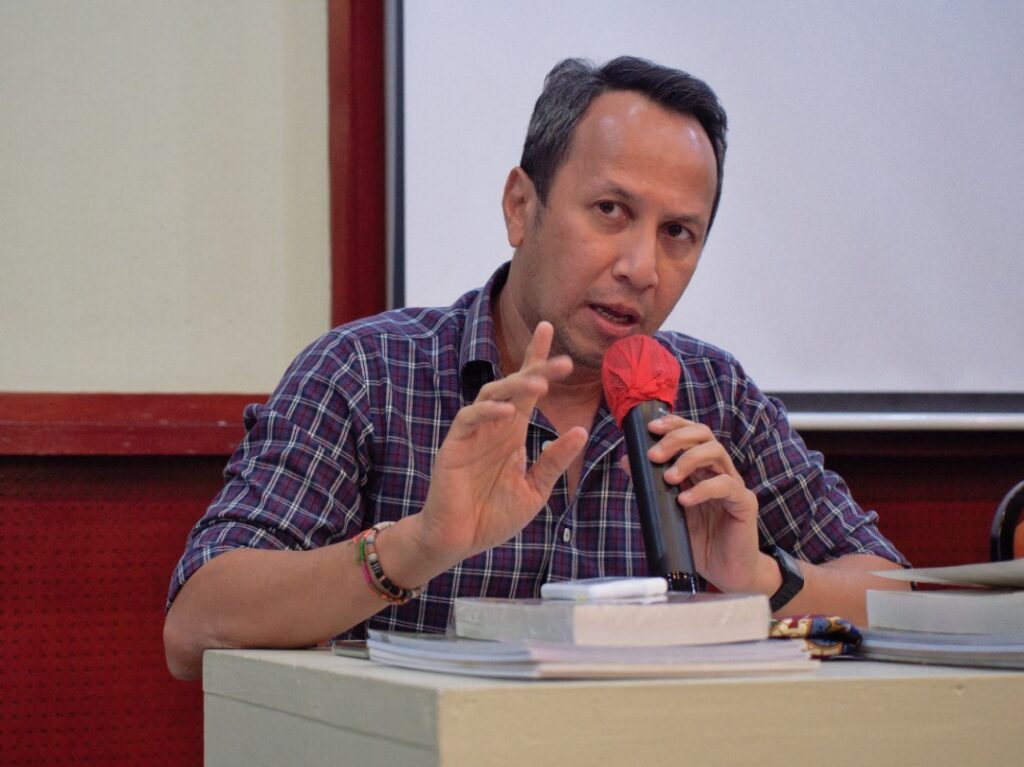Parti Sosialis Malaysia held an interesting Forum titled “Can we strengthen the Social Safety Net given our Trillion Ringgit Debt?” in the KL-Selangor Chinese Assembly Hall on 29th September 2022. Dr Kumar, the national chairperson of the PSM, explained that with the budget announcement fast approaching, political parties, NGOs and business groups are putting forward their proposals and requests for funds for particular programs. Dr Kumar listed some of the programs that the PSM has asked for in it’s “Rakyat Minta Lima (The People Want Five Issues to be Handled) campaign that was launched late last year
Programmes requested by PSM (Estimated cost per year)
- Universal pension for those aged above 65 yrs (RM 12 billion)
- Increment in Budget for Health Ministry (RM 8 billion)
- 100,000 PPR houses per year (RM 8 billion)
- Bus based public transport throughout the country (RM 5 billion)
- Programs to rehabilitate / upgrade our forests, rivers and domestic waste disposal system (RM 5 billion)
- Free tertiary education till first degree (RM 10 billion)
He pointed out that the estimated total cost of these 6 programmes comes up to RM 48 billion. He then went on to explain that estimated expenditure in the 2022 budget was RM 332 billion compared to an estimated income of RM 234 billion, resulting in a RM 98 billion shortfall that has to be covered by floating bonds for that amount. He also pointed out that Federal Government Debt in December 2021 was at RM 995 billion, and that RM 110 billion of that debt would be maturing in 2022 and require to be paid back (by floating new bonds for that amount).
Given the fact our Debt Servicing Bill is about RM 43 billion for 2022 (even bigger that the health Ministry Budget of RM 32 billion!) it is not surprising that the government is reluctant to commit to new social protection programs. Dr Kumar said that it is therefore very important that civil society also turns its mind to how the various programs and projects that we are asking for could be funded. And this was the main focus of the Forum on 29th September 2022.

YB Hannah Yeoh, the MP for Segambut, was the first speaker. She brought up two main ideas. She said that there are 110 different welfare programs run by various ministries. Only 10% of these are run by the Ministry of Women, Family and Community Development. There is therefore a lot of duplication and wastage. She proposed that there should be a national data base of all recipients of welfare programs so that aid can be targeted more efficiently. The second point that YB Hannah brought up was the fact that government expenditure is often jacked up significantly by the way contracts are sub-contracted to other vendors. This too leads to a lot of wastage. Of the total estimated expenditure of RM 332 billion for 2022, RM 30.4 billion was budgeted for purchase of Goods and Services, while RM 77.6 billion was for Development expenditure – a total of RM 108 billion. According to Dato Hussamuddin Yaacub of Rasuah Busters about 30% of these 2 categories of expenditure is wasted due to excessive mark ups. This would amount to about RM 32 billion for 2022 – more than enough to fund the Old Age Pension Scheme, multiple environmental greening programs and free education up to tertiary level.
Dr Kumar was the second panelist and he talked about the need to address the race-to-the-bottom in corporate taxes that the ASEAN nations are currently engaged in. He pointed out that corporate tax in Malaysia was 40% of profits in the 1980s. However the corporate tax rate has gone down to 24% of profits because Malaysia is in a competition with its ASEAN neighbours to attract investment, both domestic and foreign (FDI). Thailand’s corporate tax rate is 20% of profits while Singapore is at 17%. Dr Kumar said that if Malaysia unilaterally raises its corporate tax to 30% it is possible that new investments might taper off and Malaysia would fail to create sufficient jobs for the young people entering the job market. The solution therefore has to be to raise corporate taxes in tandem with other ASEAN countries. He suggested that Malaysia should start talking to the other ASEAN countries to adopt a scheme to each raise their corporate tax rate in stages over the next 10 years to all attain a corporate tax rate of 30% of profits – in other words Thailand would have to go up by 1% per year, while Malaysia would increase its corporate tax rate by 0.6% every year. The increase in tax collections would not only enable ASEAN countries to strengthen social protection for their populations but would also increase aggregate demand thus spawning new opportunities for businesses. It would be a win-win situation for all the countries, but it would take some time to negotiate such an approach.
The second idea that Dr Kumar put forward was that the government should require people to buy a permit in order to purchase a new car. (Singapore at present auctions these permits!) The price of the permit should be proportional to the engine size of the car. At present around 500,000 new cars are purchased by Malaysians every year. At an average price of RM 30,000 per permit, this permit scheme would mean an income of RM 15 billion per year. This sum is more than enough to embark on an ambitious program to provide an electric bus based public transport system across the country as well as for investment in renewable energy (RE) to supply the electricity required for this fleet of buses. Such a program would have numerous “externalities” – a lessening of congestion on our roads and a reduction of endless road construction, a reduction in greenhouse emissions, a reduction of the need to have to buy a car, and the development of 2 new industries – the manufacture of electric buses and development of RE facilities.
The third idea that Dr Kumar put forward was “Debt Monetization”. This involves the sale of government bonds to Bank Negara at very low interest rates (Perhaps 0.1% as compared to the 4.3% we are now paying to private investors buying government bonds). This would provide the government with extra funds to strengthen the social security net without increasing the debt servicing burden. Dr Kumar cautioned that this modality of raising funds must be used judiciously (perhaps capped at RM 50 billion initially) as it might put some pressure on the ringgit as, for every extra ringgit the Malaysian pubic spends, imports go up by 30 cents. An increase in Malaysian ringgit in the international financial markets would tend to depress the exchange rate of the ringgit. It might also have the effect of increasing the cost of borrowing as investors in Malaysian government bonds would factor in the possibility that the ringgit might depreciate and value of their investment along with it. Dr Kumar suggested that this modality be studied and used cautiously to increase funds for social protection.
Dr Muhammad Khalid, researcher and author of “The Colour of Inequality” was the final panelist. He explained that the current system of untargeted subsidies benefit the T20 (the richest 20% of the Malaysian population) much more than the bottom 40% (B40). The petrol subsidy is estimated to total RM 30 billion for 2022. Dr Muhammad pointed out that the T20 who tend to travel more and also use bigger cars benefit disproportionately more than poorer households. He suggested targeting subsidies using the data bases that the government currently has so that the subsidy goes only to the poorer families. For example B60 families (poorest 60% of families) could be given cash transfers of RM 200 per month to defray their petrol costs, but the pump price of petrol be allowed to reflect market price – currently a bit above RM 4 litre. This measure would see the government paying out RM 12 billion as petrol subsidy to the B60 families, which is significantly less than the RM 30 billion that will be expended this year – a savings of RM 18 billion.

Dr Muhammad Khalid also said that taxes should not be cut. But he strongly stated that the poorer sectors of society should not be taxed. In other words the Goods and Services Tax (GST) should not be re-introduced as it is a regressive tax. The poorest families pay a higher rate of GST as they spend all their income whereas the T20 save or invest a significant portion of their income thus reducing their GST rate.
The forum thus threw up six ideas that could be worked on:
- a database to reduce duplication and also to make sure all those in need are included.
- reduction of wastages and leaks. (Currently estimated at RM 32 billion per year)
- Effort at ASEAN level to gradually increase corporate tax levels – this will have to be done over time.
- Debt Monetization – cautiously at RM 30 billion per year
- Permits to buy cars – RM 15 billion per year.
- Targeted subsidies – a saving of RM 18 billion from the petrol subsidy rationalization alone.
Based on the ideas sketched out above, it is clear that the nation does have multiple sources for the funds to strengthen the social security net. What is lacking is the political vision and the political will to explore and develop the correct policies.
Policy Research Bureau
Parti Sosialis Malaysia
2 October 202
